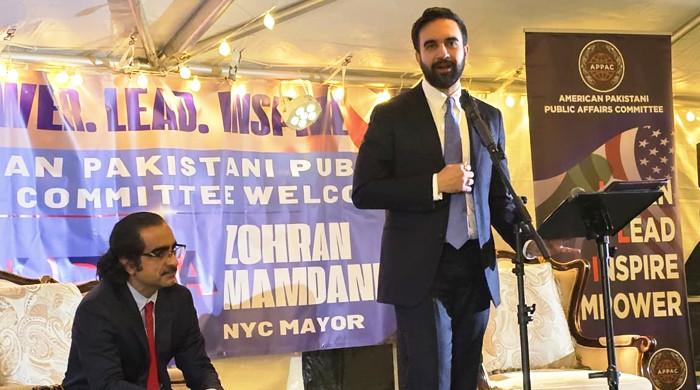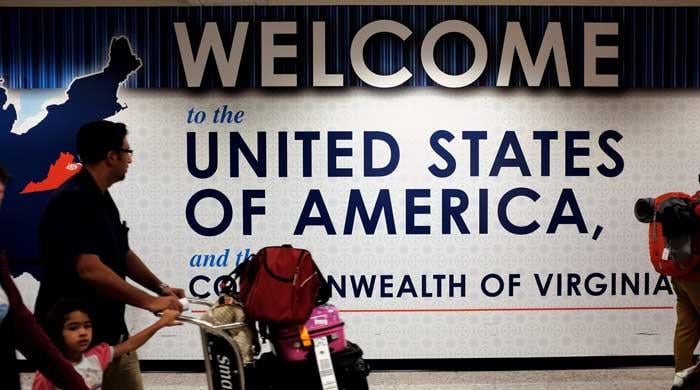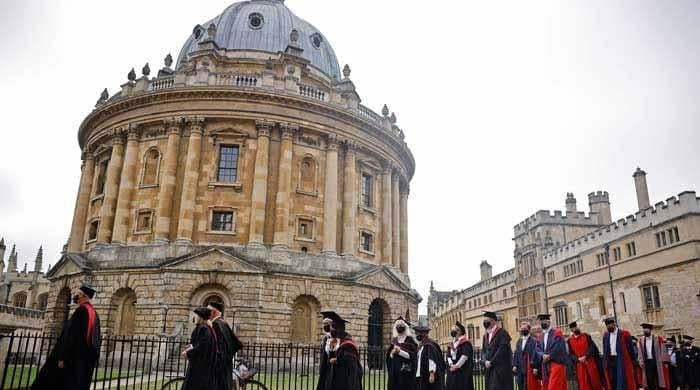Supreme Court clears way for Trump to pursue mass federal layoffs
The decision is latest win for Trump's broader efforts to consolidate power in executive branch
July 09, 2025

The US Supreme Court on Tuesday cleared the way for Donald Trump's administration to pursue mass government job cuts and the sweeping downsizing of numerous agencies, a decision that could lead to tens of thousands of layoffs while dramatically reshaping the federal bureaucracy.
Tuesday's ruling stemmed from an executive order Trump issued in February ordering agencies to prepare for mass layoffs. At Trump's direction, the administration has come up with plans to reduce staff at the US Departments of Agriculture, Commerce, Health and Human Services, State, Treasury, Veterans Affairs and more than a dozen other agencies.
In a brief unsigned order, the court said the Trump administration was "likely to succeed" in its argument that his directives were legally within his power.
The decision is the latest win for Trump's broader efforts to consolidate power in the executive branch. The Supreme Court has sided with Trump in several cases on an emergency basis since he returned to office in January, including clearing the way for implementation of some of his hardline immigration policies.
The Supreme Court's decision on Tuesday lifted San Francisco-based US District Judge Susan Illston's order in May that temporarily blocked large-scale federal layoffs while the case proceeded.
Illston had ruled that Trump exceeded his authority in ordering the government downsizing without consulting Congress, which created and funded the agencies in question.
"As history demonstrates, the president may broadly restructure federal agencies only when authorised by Congress," Illston wrote.
While Tuesday's decision cleared one major legal obstacle for the White House, the court noted that it was not assessing the legality of any specific layoff plans at federal agencies.
Those layoff proposals, some of which were submitted earlier this year, could still face legal challenges on a variety of grounds, including union opposition, statutory restrictions and civil service protections.
The White House said in a statement that the decision is a "definitive victory for the president and his administration" that reinforced Trump's authority to implement "efficiency across the federal government."
However, two White House sources familiar with the matter, who asked to remain unidentified, said the ruling did not permit agencies to execute layoffs immediately. One of the sources said additional delays or legal hurdles "could alter the scope and timing of the cuts."
A group of unions, nonprofits and local governments that sued to block the administration's mass layoffs said the ruling "dealt a serious blow to our democracy and puts services that the American people rely on in grave jeopardy" and vowed to continue fighting as the case proceeds.
The plaintiffs had warned in court filings that Trump's plans, if allowed to proceed, would result in hundreds of thousands of layoffs.
A Reuters/Ipsos poll in April found that Americans narrowly favored Trump's campaign to downsize the federal government, with about 56% saying they supported the effort and 40% opposed. Their views broke down along party lines, with 89% of Republicans but just 26% of Democrats supportive.
Some agencies whose downsizing plans had been put on hold said they would resume advancing those efforts.
"We will continue to move forward with our historic reorganization plan," the State Department, which has proposed laying off nearly 2,000 employees, said on X.
DOGE cuts
Upon taking office in January, Trump launched a massive campaign to cut the 2.3-million strong federal civilian workforce, led by billionaire Elon Musk and his Department of Government Efficiency.
Musk and his mostly young lieutenants immediately moved into key government agencies, fired workers, gained access to government computer systems and virtually shuttered two agencies — the US Agency for International Development and the Consumer Financial Protection Bureau.
Trump and Musk said the bloated federal bureaucracy needed to be downsized. Federal workers' unions and most Democrats say the cuts so far, and the plans for further mass layoffs, have been carried out haphazardly, leading to chaos inside many agencies and threatening important public services such as the processing of Social Security claims.
By late April, about 100 days into the effort, the government overhaul had resulted in the firing, resignations and early retirements of 260,000 civil servants, according to a Reuters tally.
Liberal Justice Ketanji Brown Jackson was the sole member of the nine-person court to publicly dissent from Tuesday's decision, criticising the "court's demonstrated enthusiasm for greenlighting this president's legally dubious actions in an emergency posture."
Tuesday's decision extended Trump's winning record at the Supreme Court since taking office. The court has let Trump's administration resume deporting migrants to countries other than their own without offering them a chance to show the harms they could face and end temporary legal status previously granted on humanitarian grounds to hundreds of thousands of migrants.
In addition, it has allowed Trump to implement his ban on transgender people in the US military, blocked a judge's order that the administration rehire thousands of fired employees and curbed the power of federal judges to impose nationwide rulings impeding presidential policies.
Most of these decisions have been issued as emergency orders, known colloquially as the shadow docket, that respond to applications for immediate action from the court.









